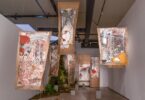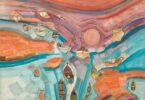Monitoring Desk
TEHRAN – Several Iranian artists have criticized the Ministry of Cultural Heritage, Tourism and Handicrafts (MCHTH) for agreeing to share the file on Persian painting with several other countries on a UNESCO list.
During its meeting last week, UNESCO’s Intergovernmental Committee for the Safeguarding of the Intangible Cultural Heritage inscribed the art of miniature as a common item between Iran, Azerbaijan, Turkey and Uzbekistan on the Representative List of the Intangible Cultural Heritage of Humanity.
Mohammad-Baqer Aqamiri, a prominent Iranian artist who has been working on Persian painting over the past 40 years, has called the word “miniature” a Latin import and said that using the word for Persian painting incorrect.
“During the National Biennial of Persian Painting in 1994, I proposed the word ‘negargari’ for Persian painting instead of ‘miniature’ as the art has been recognized as Persian painting around the world over the years,” Aqamiri told the Persian service of ILNA on Tuesday.
“Whether the art is registered at UNESCO or not, it is recognized as Persian painting around the world. Meanwhile, the art has been shared at UNESCO with some countries having no background in the field,” lamented the expert who is teaching the art at several Iranian academic centers.
“For example, Turkey has centered on the art over the past 30 or 40 years, and their artworks in this field are really amateurish, and Azerbaijan has no artist who has his own style or anything of significance to say in Persian painting,” he noted.
Following the registration of Persian painting on the UNESCO list, Afghanistan has officially complained to the organization about not having a share in the file.
“It should not be forgotten that Iran’s borders in the past went beyond what we see today. In the past, even Herat was one of Iran’s cities that was located in the Great Khorasan region, but now, Afghanistan arrogates the art to itself,” Aqamiri said.
Mohammad-Ali Rajabi, a member of the Iranian Academy of Arts who also teaches art at several academic centers, has said that Iran has agreed to share the art file with other countries under pressure from some countries such as the United States.
“By their monopolistic policies, countries such as the U.S. intend to stop Iran’s progress, taking all that Iran possesses, and attribute it to other countries,” he said.
“Although the MCHTH officials sought to register Persian painting for Iran at UNESCO, the pressure caused the item to be inscribed as a multinational file,” he lamented.
“A large number of Persian painters and artists in other fields were taken captive by the Ottomans during Sultan Selim’s raid on Iran, and Persian painting flourished in the Ottoman Empire at that time with the help of these Iranian artists,” he said.
“A present, Turkey has no art that can be named negargari so it is fundamentally nonsense to share the UNESCO status on the art of negargari with Turkey and these other countries,” Rajabi noted.
A Persian painting is a two-dimensional artwork that involves the design and creation of small paintings on a book illustration or a separate work of art intended to be kept in an album of such works called a muraqqa.
The techniques are broadly comparable to the Western and Byzantine traditions of miniatures in illuminated manuscripts.
Although there is an equally well-established Persian tradition of wall-painting, the survival rate and state of preservation of miniatures is better, and miniatures are a much better-known form of Persian painting in the West. Many of the most important examples of this art form are in Western, or Turkish museums.
Persian painting became a significant Iranian genre during the 13th century, receiving Chinese influence after the Mongol conquests, and the highest point in the tradition was reached in the 15th and 16th centuries.
Persian painting was the dominant influence on other Islamic miniature traditions, principally the Ottoman miniature in Turkey, and the Mughal miniature in the Indian subcontinent.
Photo: An artwork from the 10th National Biennial of Persian Painting held at the Tehran Museum of Contemporary Art in January 2017.
Courtesy: Tehran Times






